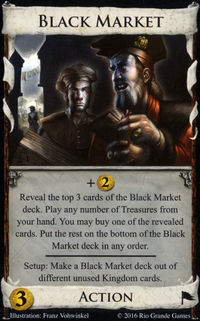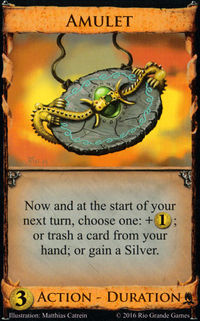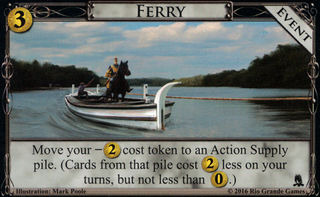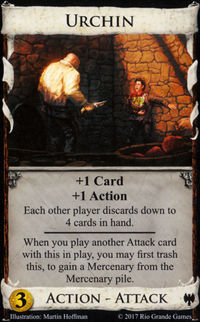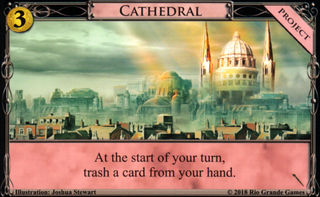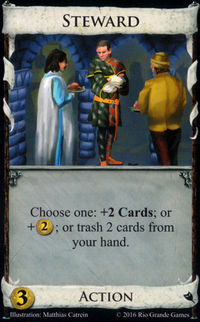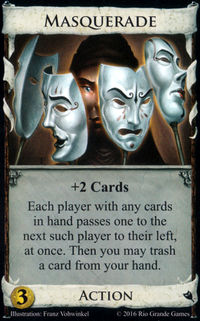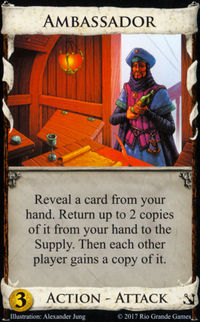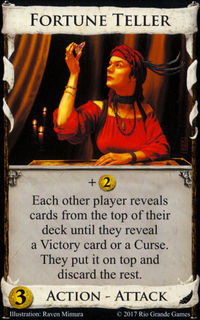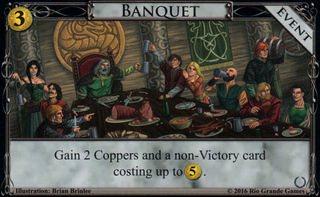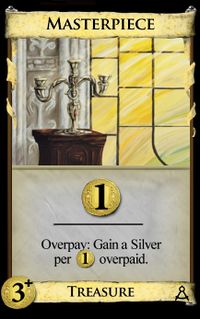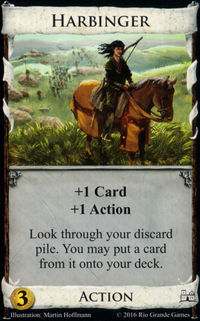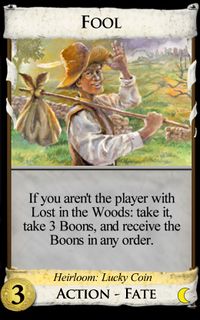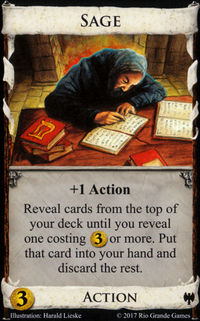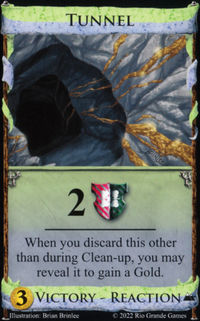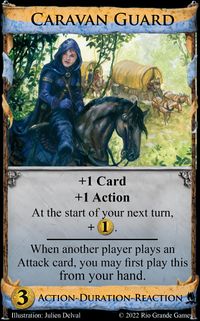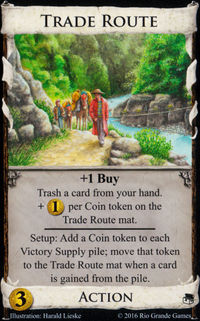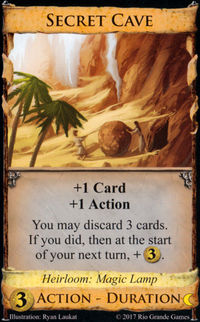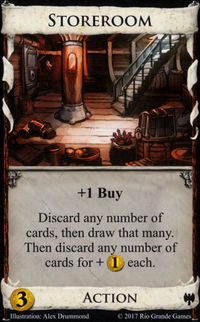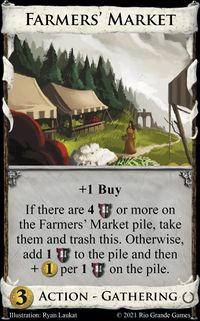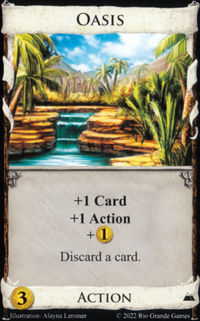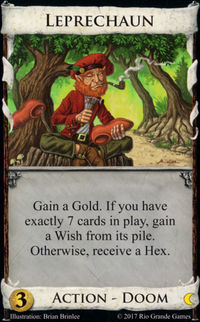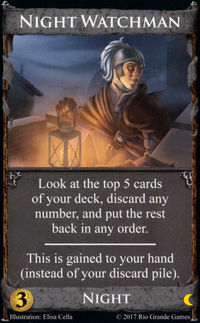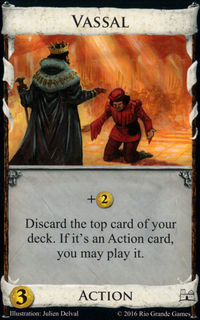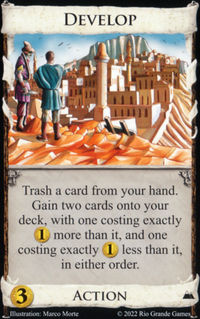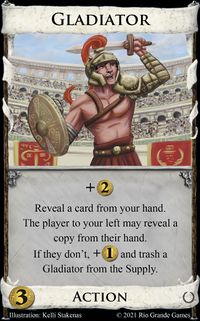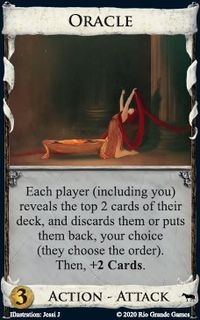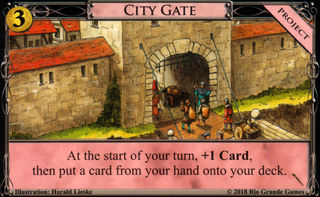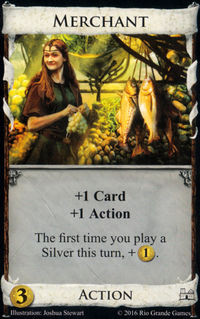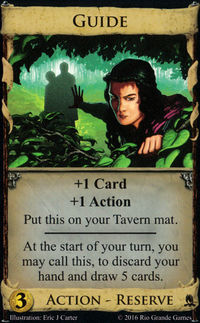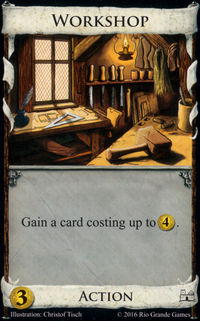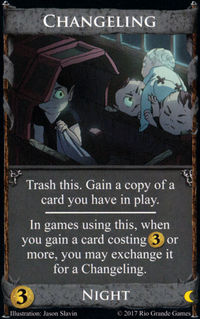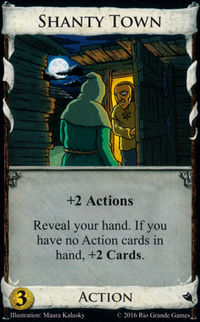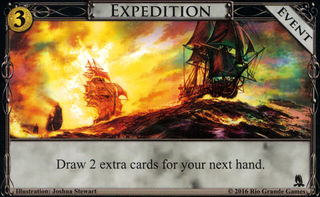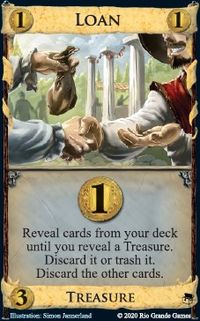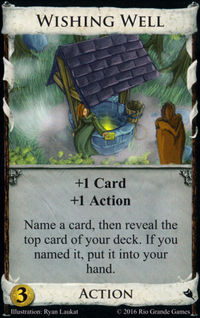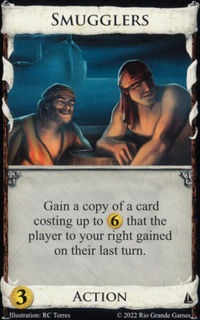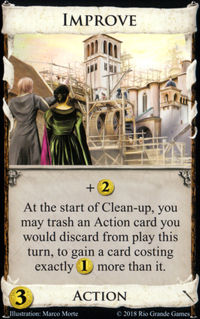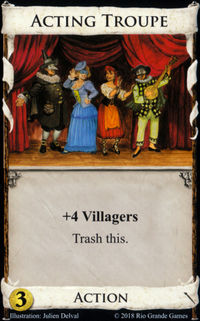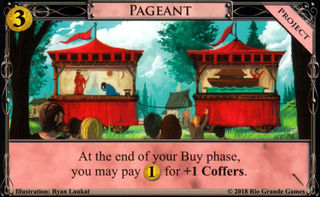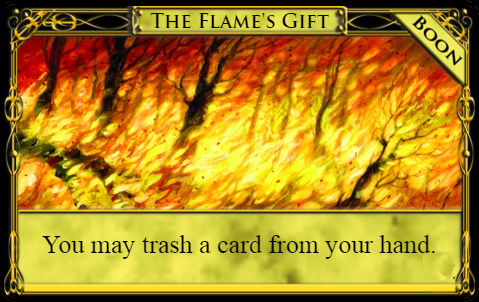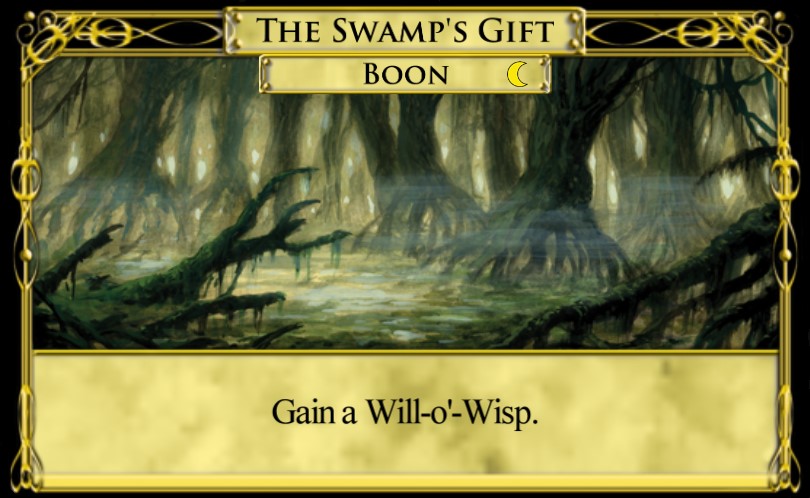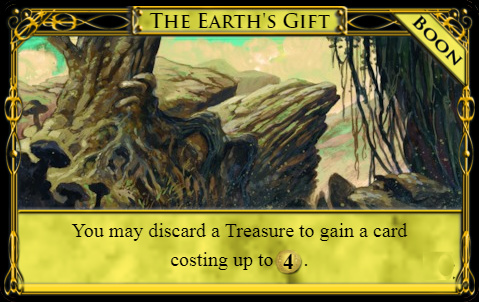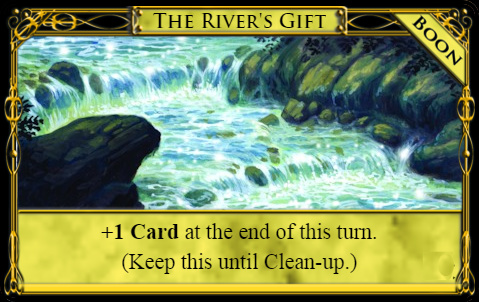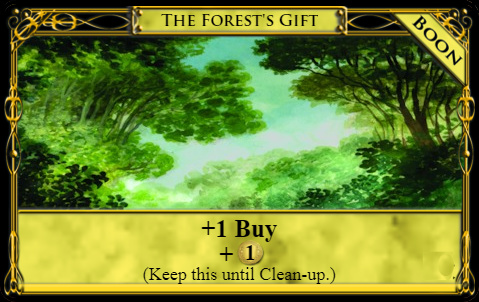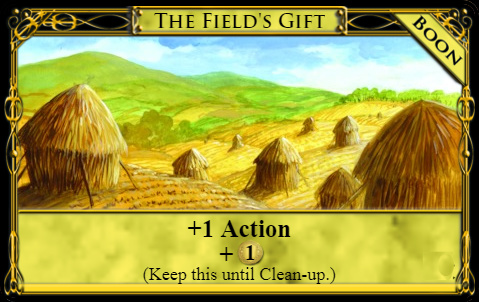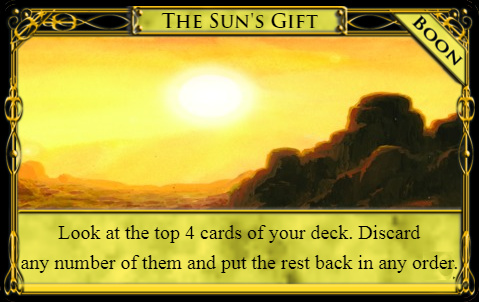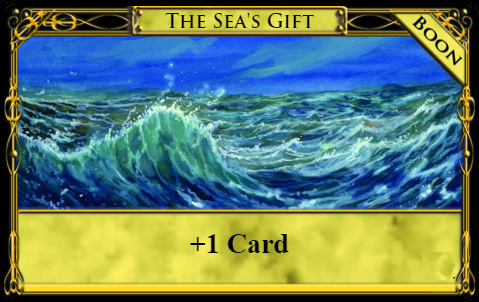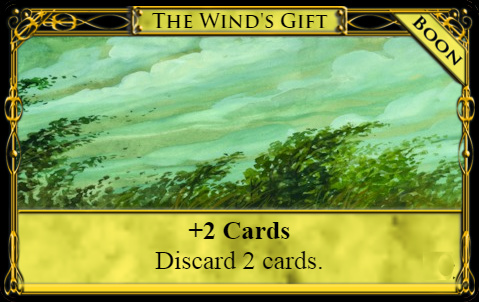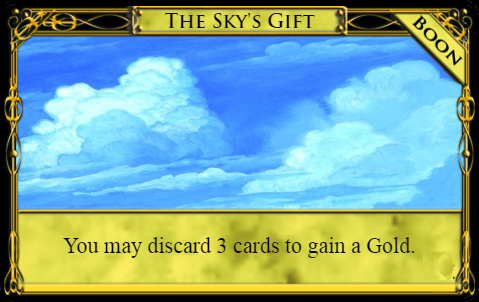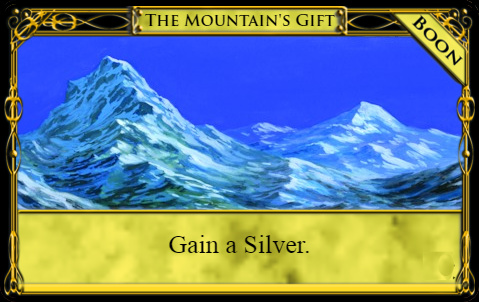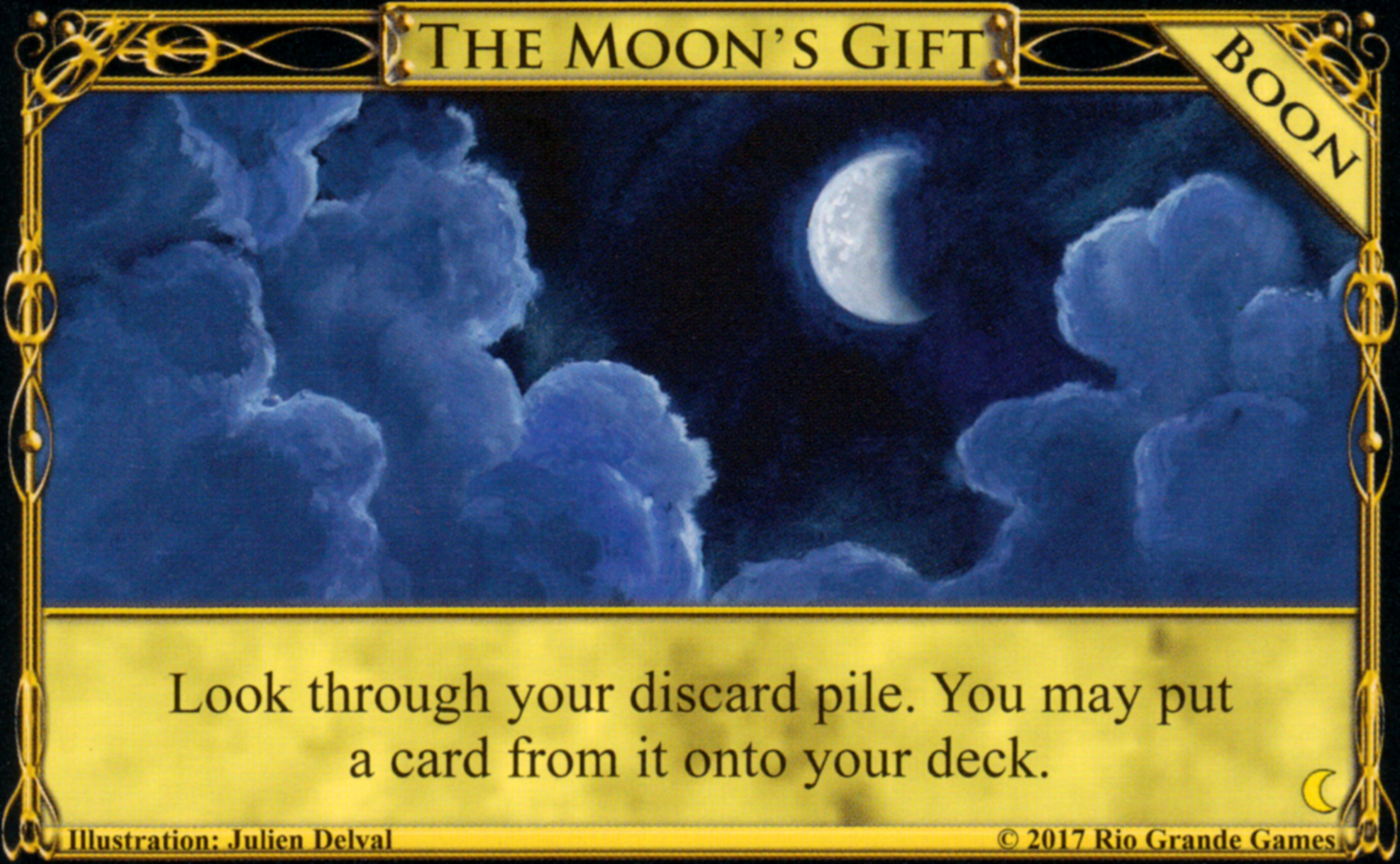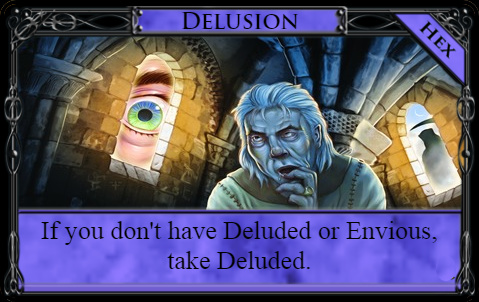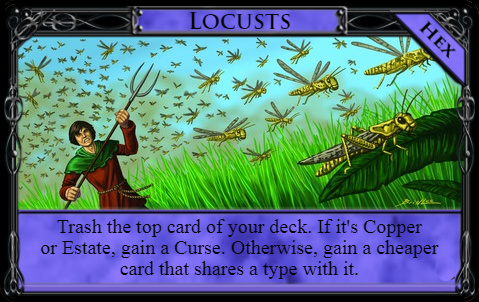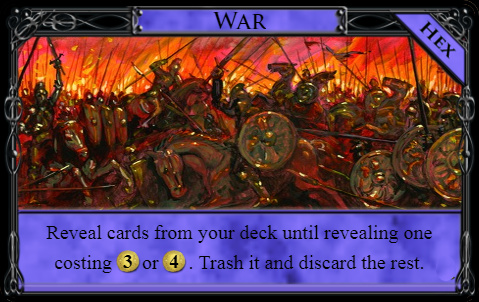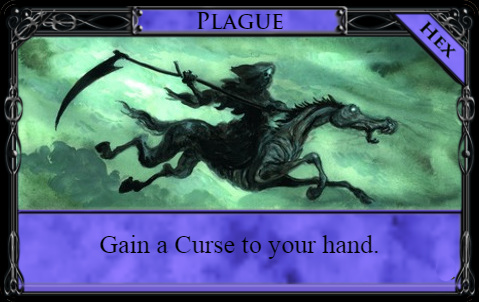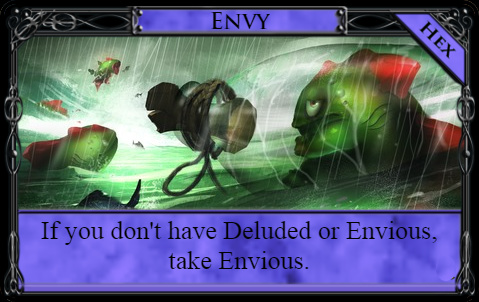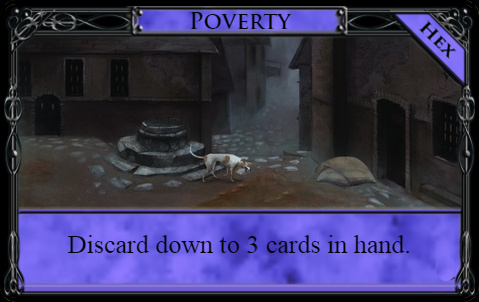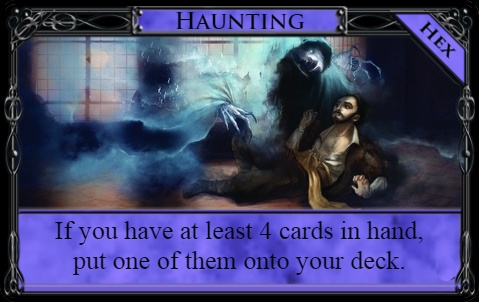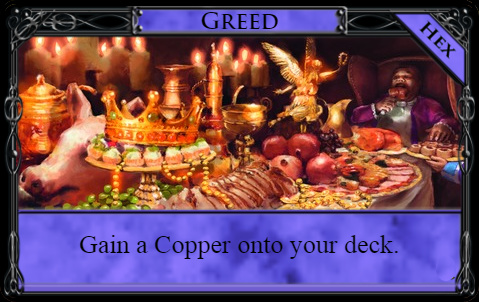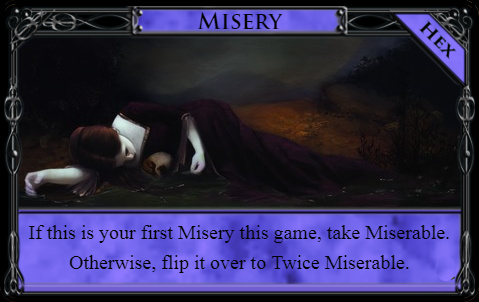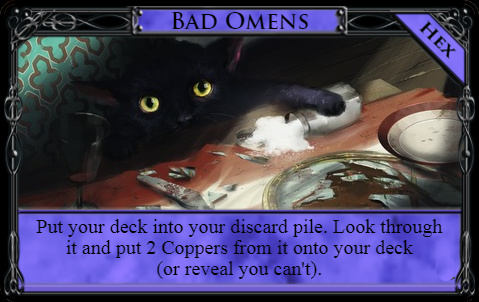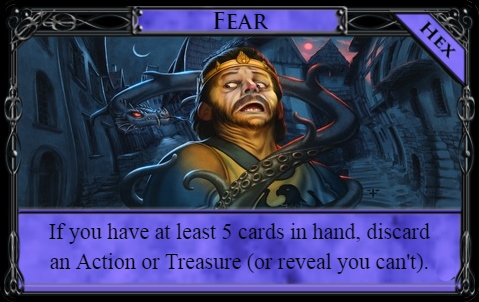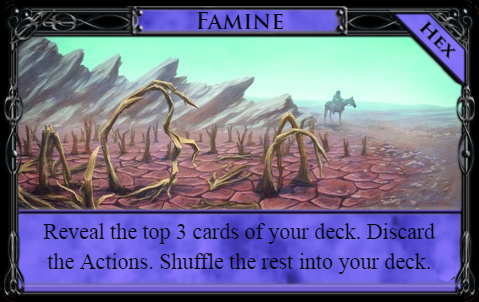1
Dominion Articles / Dominion Cap Management (Unfinished)
« on: August 07, 2019, 09:20:00 pm »
(A lot of what is going to be said will be already known or understood in a general sense by good players, although perhaps not put into words, or maybe not put into the same words. My hope with this article is to perhaps give someone another way of thinking about the game, or to help them break through and improve in how they approach each game. In addition, the article is unfinished and I would like some feedback on it and which direction to take it.)
Cap Management
Dominion is a game of skill, chance management and cap management.
Dominion is a game of skill because there are usually a lot of options in each game and deciding what works and what doesn’t and in what order the things happen in is something that is only acquired with knowledge and finesse. Dominion is a game of chance management because of shuffles and randomness, and sometimes someone has to make an educated gamble in order to potentially win. It is important to understand game positioning and what riskier/higher reward plays are. These are things everybody worth their salt knows already.
Dominion is also a game of cap management. A cap is to put simply, potential. A low cap doesn’t have very much potential, and a high cap has a lot of potential. How the deck actually performs will depend on a number of factors, but it is always within the constraints of the cap. Think of it like a volume knob. The speaker's sound can get as loud as anywhere within the knob's range, but it cannot exceed the maximum range of 11 on the volume knob. A deck can go anywhere within its cap, but it cannot go any further than that cap.
In each game, there are seven different caps to constantly keep track of within the game, and the decks will often only be as good as the lowest cap, or perhaps higher ceilings from other caps will help to overcome the lowest cap through interactions. Knowing these seven caps and how they affect gameplay will be instrumental in becoming a better Dominion player. The seven caps in no particular order are Time, Draw, Plays, Gains, Scoring, Oppression, and Consistency. In addition, it’s important to note that in all games, your opponent has every cap that you do. Remember this for later.
Each cap will be briefly explained with the mindset that they should be approached with, and then how exactly this information will help is up to you. Each cap affects the other caps in some form or another, and it is often important to remember that they interact together in much the same way as cards interact with each other. It is crucial to know how to form relationships between objects, and it is why a lack either of familiarity with cards and strategies, or lack of ability in drawing relationships will make the ideas presented useless.
Time
Time is the average time allotted to each strategy per player before the game ends, and perhaps the most important metric in Dominion. Time is also the most complex cap, constantly changing as the game continues. Because of this, there is no feasible way to measure time analytically in a given game, and it must be done instead with experience and guesswork. Each strategy will take a certain amount of time, and each decision will either take the same amount of time or more, depending on whether that decision was a mistake. In addition, the game itself can decide that the strategy chosen will go faster or slower than usual, based on draws or general luck.
Remembering that your opponent has every cap that you do, your time cap is directly affected by all decisions your opponent makes, and his time cap is directly affected by the decisions you make. This is because choices exist, and any decision anybody makes will have a chance to be reacted to (barring game ending choices) which will change the dynamic of the game entirely. If an opponent commits too hard to Provinces too soon, there is a correct play that will give the time cap advantage to the other player, and an incorrect play that will give the time cap advantage to the opponent instead.
Presented below and in all future cap types will be general questions to ask subconsciously while playing, from the very start of the game to its conclusion.
How fast can the game possibly end to the best of your guessing ability?
How fast can the game reasonably end? Is it time to score? Do you have time to build more?
If behind, does scoring prolong the game and give a real chance or does it just make you lose later?
Answering these questions is going to be difficult a lot of the time, because the answer is dependent on the other caps.
Consistency
The next cap is Consistency, which more or less defined as how predictable the turns will be on average. A lot of things will increase Consistency. Removing bad cards increases Consistency, as does adding good cards. Set-ups and cards such as Summon and Captain can increase Consistency. Simultaneously, adding stop cards such as Provinces will increase the amount of chaos in the deck, and will then decrease the Consistency cap. There is value in getting the deck over-consistent in order to hold more stop cards, but always be mindful of how much time is left.
Again we are presented with a number of questions.
How likely is it that you can do everything you want to do?
Is the deck going to get reasonably more consistent if you continue to build?
Is the added consistency going to matter more than the time left?
Can building continue to consistently handle more green?
Oppression
The Oppression cap is perhaps the least important cap on average and is in some ways the opposite of consistency, but it can sometimes be absolutely crucial. To put it simply, the Oppression cap measures how hard you can grind the opponent's deck to a halt. Usually this means attacks such as Cultist and Mountebank, but also devious pins and some Possession tricks to guarantee bad turns forever, to name a couple of examples.
How bad is the oppression? Is it ignorable?
Will the oppression affect the Time cap?
Is it worth giving out oppression yourself?
Draw
The Draw cap is simply how many draw cards are in the deck. Drawing the deck and increasing handsize are both very important things to do. Whether the cards are playable due to being terminal are not is not what the Draw cap worries about, but only whether or not it has that potentiality to draw cards. Some simpler questions:
How strong is the draw?
Is it terminal? How much draw can you actually play?
Play
The Play cap is to put simply, the amount of cards you can play that can do things. This includes cantrips, terminals, action increasers such as villages and even non-action cards like Scepter and Vampire. Anything the deck can play, the Play cap has covered. If the deck has a multitude of terminal cards in it, the Play cap will go down because there are cards that cannot be played. The Play cap will then go up if there are villages added. Remember that this is simply a measurement of what can be played if the entire deck was laid out; it is not a measurement of consistency! Also, sometimes it’s perfectly okay to have a bad Play cap in a sloggy game because the terminal cards are not likely to connect.
Once more, questions:
How many terminal cards can you play?
Would your deck perish if it didn’t have access to enough villages?
How many non-terminal cards can be played, and does it make the deck better when added?
Gains
The Gain cap is how many cards the deck can gain on a given turn. This includes buys and cards like Workshop and Bureaucrat. Some gains are good and some are not so good. Pretty straightforward. Making it a bit more complicated is that some gains matter more than others, but this will be up to the player to decide whether say, Beggar’s coppers are any good. Again, there are a couple of questions:
How much can be gained, and does the deck even want it?
Will the gained cards lower the Consistency cap?
Can the deck gain and play cards?
How much does the deck rely on buys, and does it have sufficient economy to realize the potential?
How do the Gain caps play into time left?
Is there a pileout?
Scoring
Finally, the Scoring cap, which is an approximation of what the deck can realistically expect to score. It is very important to consider the Consistency and Time caps when considering the Scoring cap, especially with the presence of Alt-VP but also with general timing of when to pull the trigger. Final questions:
How good are Provinces? Can multiple Provinces be gained?
How good is the Alt-VP? Is it strong enough to withstand a Province rush? Can it withstand a pileout?
What does the deck want to do, and what is actually possible?
All of these questions should be running through a player’s head as he plays. Some questions are easier than others, but all of them will be at one time crucial to ask.
Kingdom Caps
Complicating things further, all seven caps also exist within each Kingdom. If standard caps measure deck potential, it makes sense that each Kingdom has potential as well. Some Kingdoms have no villages, some Kingdoms have no trashing. All personal deck caps are then restricted by the seven Kingdom caps which exist. As an example, there may be strategies within the Kingdom that increase the consistency cap but take such a long time as to be impractical to realistically pursue. Rushes also are a violent way in which the Kingdom Time cap will slap down any potential deck ideas. For it to work though, the opponent has to actually pursue it!
General Cap Principles
Work backwards. Start with what you know, and use those conclusions to form conclusions about other caps. For example, it is impossible to ascertain when to accurately score without knowing the opponent’s caps.
A higher Oppression cap generally means a higher Time cap.
The second player inherently starts with a lower tempo cap, but how big this gulf is depends on how quickly the decks can become consistent. Higher consistency means the second player has an even lower tempo cap, and then they may have to commit harder to risky plays in order to jump back into the game.
The opponent has every cap that you do. Because of this, all caps are inherently reactive. Know your opponent’s caps. One cap may be less of a problem or more of a problem based on what the opponent’s plan and caps are, and it is important to change strategic directions accordingly.
For example, if the opponent decided he wanted to rush single Provinces instead of building the deck for longer, the appropriate reaction could be to not touch the Provinces at all for a higher time cap; This allows higher scoring with Alt-VP later which otherwise may not have been feasible. It may also instead be correct to follow with the Provincing because it is the only way to score and the time cap is against you.
Another example: The opponent has over-extended his terminals and there’s only one set of villages in the Kingdom. The winning play could be to snatch up all of the remaining villages and give the opponent a permanent lower Play cap.
Cap Management
Dominion is a game of skill, chance management and cap management.
Dominion is a game of skill because there are usually a lot of options in each game and deciding what works and what doesn’t and in what order the things happen in is something that is only acquired with knowledge and finesse. Dominion is a game of chance management because of shuffles and randomness, and sometimes someone has to make an educated gamble in order to potentially win. It is important to understand game positioning and what riskier/higher reward plays are. These are things everybody worth their salt knows already.
Dominion is also a game of cap management. A cap is to put simply, potential. A low cap doesn’t have very much potential, and a high cap has a lot of potential. How the deck actually performs will depend on a number of factors, but it is always within the constraints of the cap. Think of it like a volume knob. The speaker's sound can get as loud as anywhere within the knob's range, but it cannot exceed the maximum range of 11 on the volume knob. A deck can go anywhere within its cap, but it cannot go any further than that cap.
In each game, there are seven different caps to constantly keep track of within the game, and the decks will often only be as good as the lowest cap, or perhaps higher ceilings from other caps will help to overcome the lowest cap through interactions. Knowing these seven caps and how they affect gameplay will be instrumental in becoming a better Dominion player. The seven caps in no particular order are Time, Draw, Plays, Gains, Scoring, Oppression, and Consistency. In addition, it’s important to note that in all games, your opponent has every cap that you do. Remember this for later.
Each cap will be briefly explained with the mindset that they should be approached with, and then how exactly this information will help is up to you. Each cap affects the other caps in some form or another, and it is often important to remember that they interact together in much the same way as cards interact with each other. It is crucial to know how to form relationships between objects, and it is why a lack either of familiarity with cards and strategies, or lack of ability in drawing relationships will make the ideas presented useless.
Time
Time is the average time allotted to each strategy per player before the game ends, and perhaps the most important metric in Dominion. Time is also the most complex cap, constantly changing as the game continues. Because of this, there is no feasible way to measure time analytically in a given game, and it must be done instead with experience and guesswork. Each strategy will take a certain amount of time, and each decision will either take the same amount of time or more, depending on whether that decision was a mistake. In addition, the game itself can decide that the strategy chosen will go faster or slower than usual, based on draws or general luck.
Remembering that your opponent has every cap that you do, your time cap is directly affected by all decisions your opponent makes, and his time cap is directly affected by the decisions you make. This is because choices exist, and any decision anybody makes will have a chance to be reacted to (barring game ending choices) which will change the dynamic of the game entirely. If an opponent commits too hard to Provinces too soon, there is a correct play that will give the time cap advantage to the other player, and an incorrect play that will give the time cap advantage to the opponent instead.
Presented below and in all future cap types will be general questions to ask subconsciously while playing, from the very start of the game to its conclusion.
How fast can the game possibly end to the best of your guessing ability?
How fast can the game reasonably end? Is it time to score? Do you have time to build more?
If behind, does scoring prolong the game and give a real chance or does it just make you lose later?
Answering these questions is going to be difficult a lot of the time, because the answer is dependent on the other caps.
Consistency
The next cap is Consistency, which more or less defined as how predictable the turns will be on average. A lot of things will increase Consistency. Removing bad cards increases Consistency, as does adding good cards. Set-ups and cards such as Summon and Captain can increase Consistency. Simultaneously, adding stop cards such as Provinces will increase the amount of chaos in the deck, and will then decrease the Consistency cap. There is value in getting the deck over-consistent in order to hold more stop cards, but always be mindful of how much time is left.
Again we are presented with a number of questions.
How likely is it that you can do everything you want to do?
Is the deck going to get reasonably more consistent if you continue to build?
Is the added consistency going to matter more than the time left?
Can building continue to consistently handle more green?
Oppression
The Oppression cap is perhaps the least important cap on average and is in some ways the opposite of consistency, but it can sometimes be absolutely crucial. To put it simply, the Oppression cap measures how hard you can grind the opponent's deck to a halt. Usually this means attacks such as Cultist and Mountebank, but also devious pins and some Possession tricks to guarantee bad turns forever, to name a couple of examples.
How bad is the oppression? Is it ignorable?
Will the oppression affect the Time cap?
Is it worth giving out oppression yourself?
Draw
The Draw cap is simply how many draw cards are in the deck. Drawing the deck and increasing handsize are both very important things to do. Whether the cards are playable due to being terminal are not is not what the Draw cap worries about, but only whether or not it has that potentiality to draw cards. Some simpler questions:
How strong is the draw?
Is it terminal? How much draw can you actually play?
Play
The Play cap is to put simply, the amount of cards you can play that can do things. This includes cantrips, terminals, action increasers such as villages and even non-action cards like Scepter and Vampire. Anything the deck can play, the Play cap has covered. If the deck has a multitude of terminal cards in it, the Play cap will go down because there are cards that cannot be played. The Play cap will then go up if there are villages added. Remember that this is simply a measurement of what can be played if the entire deck was laid out; it is not a measurement of consistency! Also, sometimes it’s perfectly okay to have a bad Play cap in a sloggy game because the terminal cards are not likely to connect.
Once more, questions:
How many terminal cards can you play?
Would your deck perish if it didn’t have access to enough villages?
How many non-terminal cards can be played, and does it make the deck better when added?
Gains
The Gain cap is how many cards the deck can gain on a given turn. This includes buys and cards like Workshop and Bureaucrat. Some gains are good and some are not so good. Pretty straightforward. Making it a bit more complicated is that some gains matter more than others, but this will be up to the player to decide whether say, Beggar’s coppers are any good. Again, there are a couple of questions:
How much can be gained, and does the deck even want it?
Will the gained cards lower the Consistency cap?
Can the deck gain and play cards?
How much does the deck rely on buys, and does it have sufficient economy to realize the potential?
How do the Gain caps play into time left?
Is there a pileout?
Scoring
Finally, the Scoring cap, which is an approximation of what the deck can realistically expect to score. It is very important to consider the Consistency and Time caps when considering the Scoring cap, especially with the presence of Alt-VP but also with general timing of when to pull the trigger. Final questions:
How good are Provinces? Can multiple Provinces be gained?
How good is the Alt-VP? Is it strong enough to withstand a Province rush? Can it withstand a pileout?
What does the deck want to do, and what is actually possible?
All of these questions should be running through a player’s head as he plays. Some questions are easier than others, but all of them will be at one time crucial to ask.
Kingdom Caps
Complicating things further, all seven caps also exist within each Kingdom. If standard caps measure deck potential, it makes sense that each Kingdom has potential as well. Some Kingdoms have no villages, some Kingdoms have no trashing. All personal deck caps are then restricted by the seven Kingdom caps which exist. As an example, there may be strategies within the Kingdom that increase the consistency cap but take such a long time as to be impractical to realistically pursue. Rushes also are a violent way in which the Kingdom Time cap will slap down any potential deck ideas. For it to work though, the opponent has to actually pursue it!
General Cap Principles
Work backwards. Start with what you know, and use those conclusions to form conclusions about other caps. For example, it is impossible to ascertain when to accurately score without knowing the opponent’s caps.
A higher Oppression cap generally means a higher Time cap.
The second player inherently starts with a lower tempo cap, but how big this gulf is depends on how quickly the decks can become consistent. Higher consistency means the second player has an even lower tempo cap, and then they may have to commit harder to risky plays in order to jump back into the game.
The opponent has every cap that you do. Because of this, all caps are inherently reactive. Know your opponent’s caps. One cap may be less of a problem or more of a problem based on what the opponent’s plan and caps are, and it is important to change strategic directions accordingly.
For example, if the opponent decided he wanted to rush single Provinces instead of building the deck for longer, the appropriate reaction could be to not touch the Provinces at all for a higher time cap; This allows higher scoring with Alt-VP later which otherwise may not have been feasible. It may also instead be correct to follow with the Provincing because it is the only way to score and the time cap is against you.
Another example: The opponent has over-extended his terminals and there’s only one set of villages in the Kingdom. The winning play could be to snatch up all of the remaining villages and give the opponent a permanent lower Play cap.

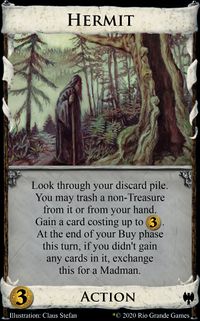
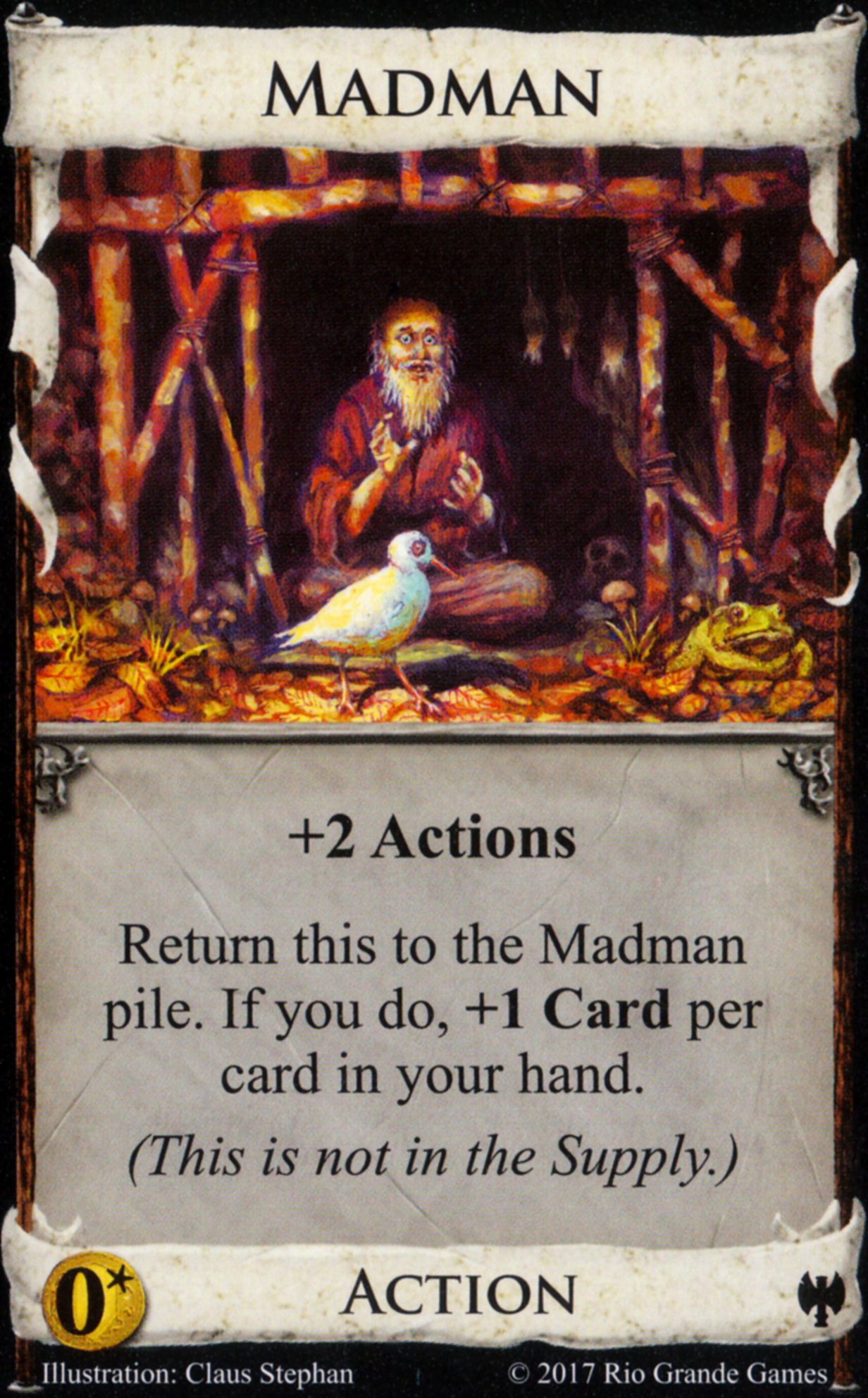
 Cards: Part 2
Cards: Part 2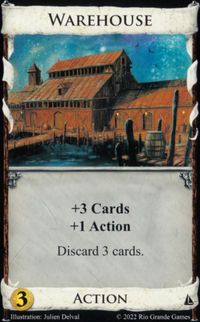
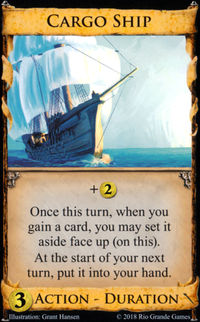
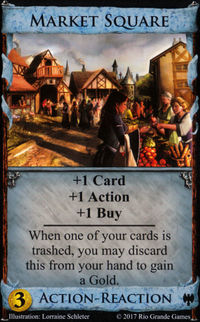
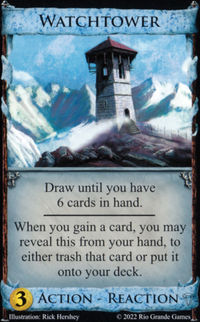
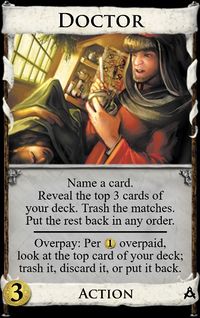
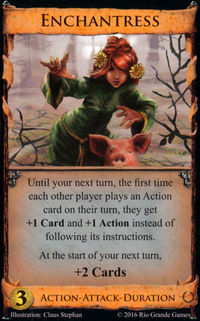
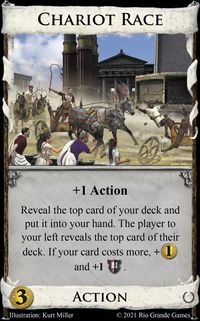
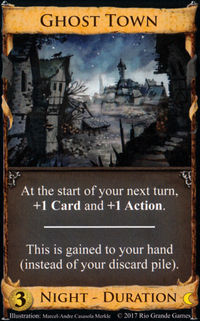
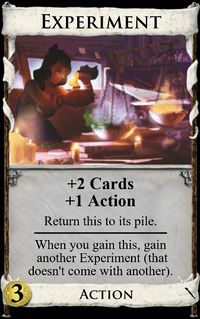
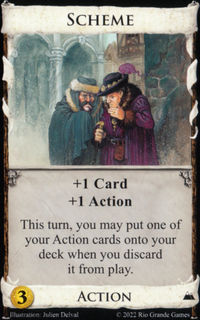
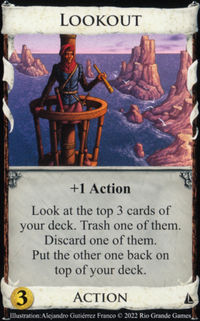
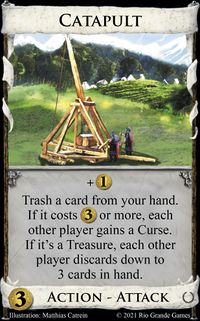
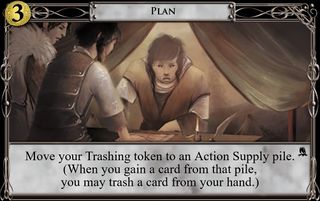
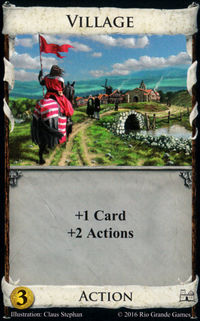
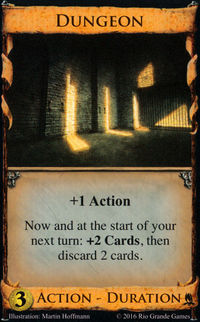

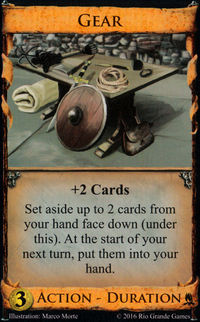
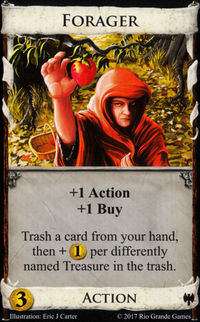
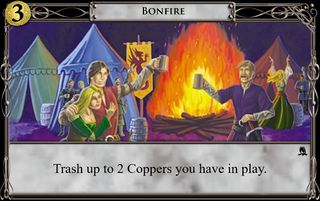
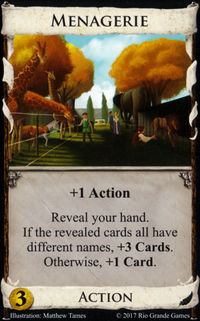
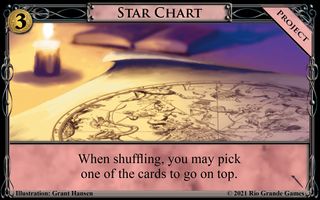
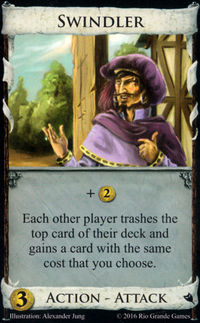
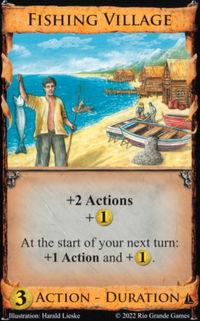
 / Median:82.54% / Standard Deviation: 18.63%
/ Median:82.54% / Standard Deviation: 18.63% 